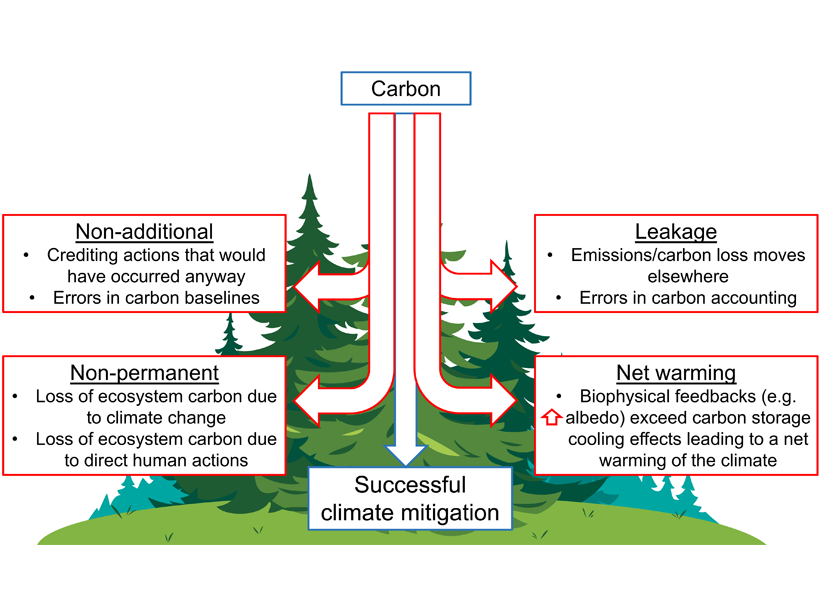Source: AGU Advances
Mitigating climate change will require both reduced emissions and increasing carbon sinks. Nature-based Climate Solutions (NCS) refers to efforts to conserve ecosystems that could serve as effective carbon sinks to help mitigate climate change. But what if projected climate change renders these same ecosystems vulnerable to loss of carbon storage rather than gain?
Coffield et al. [2021] use several complementary statistical approaches to evaluate the projected permanence of carbon stored in forests and other wildlands of California. They project that several proposed areas for ambitious expansion of NCS may not be able to support carbon-rich forests at the end of this century.
In a companion Viewpoint piece, Anderegg [2021] explains the need to understand these risks when promoting NCS. He argues that NCS still has good potential, but it must be paired with significant emissions reductions to be a viable contributor to overall climate mitigation.
Citation: Coffield, S., Hemes, K., Koven, C. et al. [2021]. Climate-driven limits to future carbon storage in California’s wildland ecosystems. AGU Advances, 2, e2021AV000384. https://doi.org/10.1029/2021AV000384
—Eric Davidson, Editor, AGU Advances
Text © 2021. The authors. CC BY-NC-ND 3.0
Except where otherwise noted, images are subject to copyright. Any reuse without express permission from the copyright owner is prohibited.

